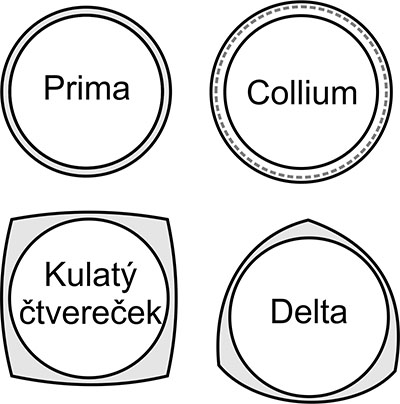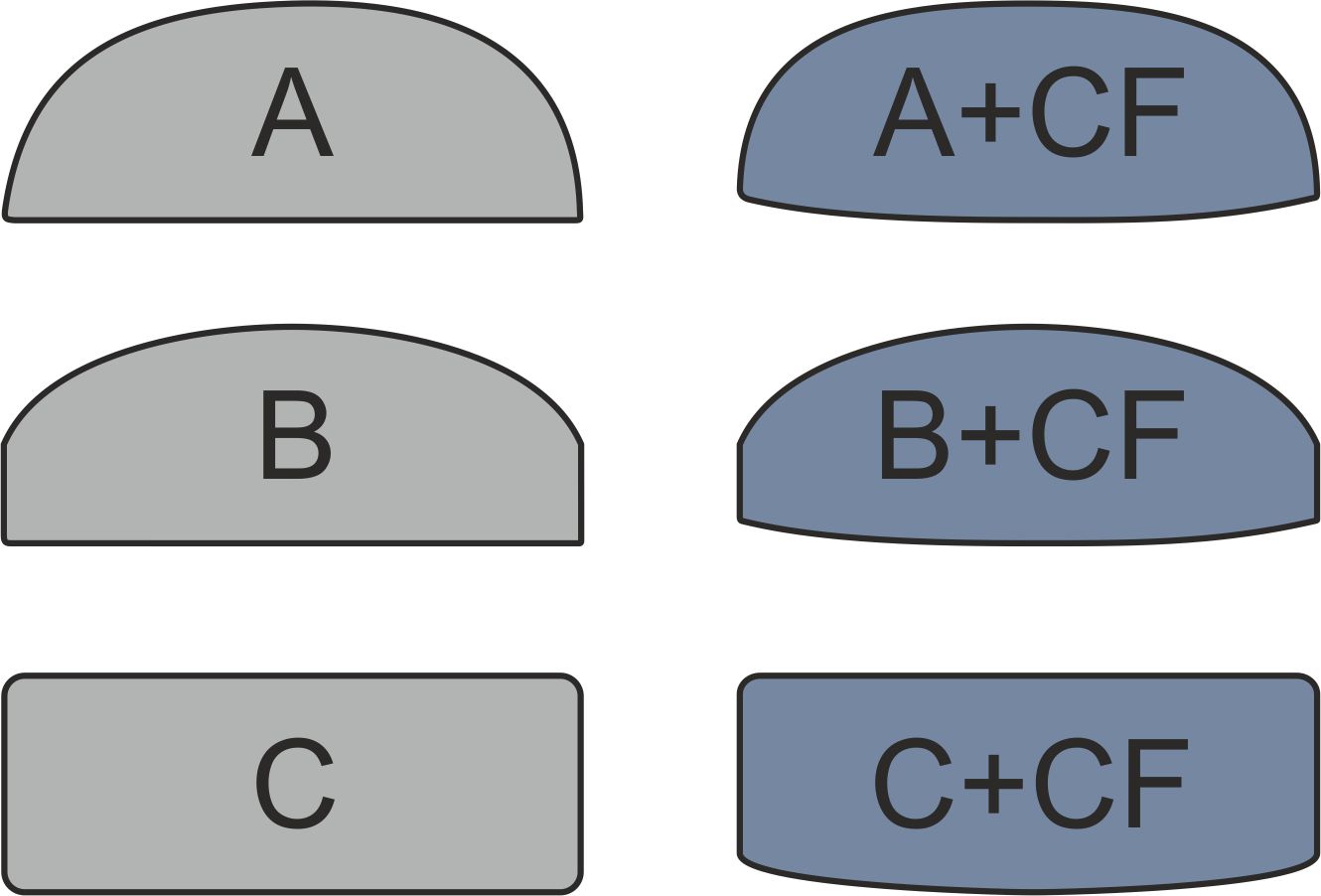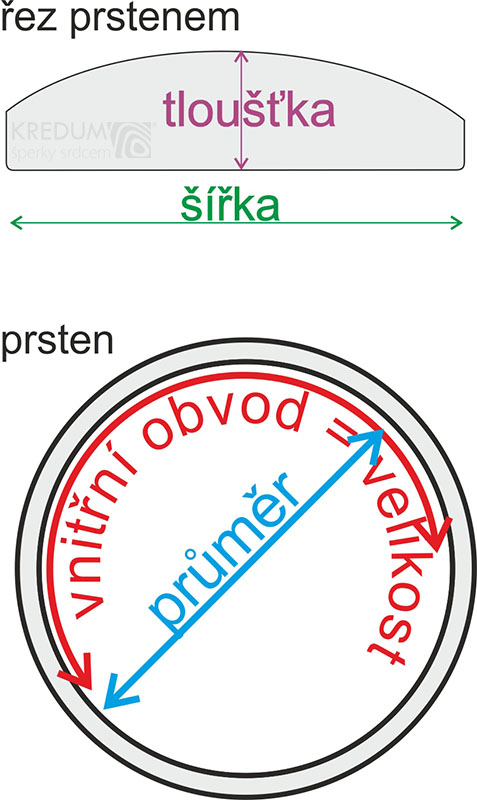Zobrazit kategorie
Přihlásit
Zobrazit kategorie
| Chemical composition of surgical stainless steel 316L (weight in %). |
||||||||
| C | Cr | Ni | Mn | Mo | Ti | Si | ||
| DIN 1.4404 | AISI 316L | <0,03 | 16,5 -18,5 | 11,0 -14,0 | < 2,0 | 2,0 - 2,5 | 0 | 0.5 |
| Chemical composition of titanium (weight in %) (maximum value) | |||||||||||
| O | N | C | H | Fe | Al | Ni | V | Ni | Mo | jiné | residue |
| 0,25 | 0,03 | 0,08 | 0,015 | 0,3 | 0 | 0 | 0 | 0 | 0 | 0 |
0,4
|
The main disadvantage of stainless steel is its rigidity. It cannot be formed into fine details as gold or silver that are softer and better malleable. Stainless steel cannot be solder without any visible joints.
Stainless steel is harder compared to gold and silver. Nevertheless, it can be still cut using saw machine for metal cutting or appropriate pliers.
Please look at our video:
Our legislation is very benevolent for the use of steel in jewellery so be careful about the material used for your jewel. We do not recommend cheap jewellery from seller where you cannot check a material specification sheet. We can present this document on demand.
We love working with stainless steel for its various faces: from a gentle feminine shiny appearance to a masculine rough dark hammered look. I am sure that everybody find his/her own design that complete his/her image.
Rings made of stainless steel and titanium and their options
Rings can be made in many variants. It is very hard to describe all of them so I would like to give you some basic informations about key parameters to form your idea about your future ring.
Most rings have a standard circular shape (such as Prima ring) but we can also make rings with a rectangle shape (such as Round square ring or Kumali ring), triangle shape (Delta ring) or rings with a concave shape (Zlabek ring).

Surface of the ring can be smooth (such as ring Prima, Klas), hammered (such as ring Natura, Wood, Archeos, Betula), with ground areas (such as ring Rock, Marro, Raw) or have other adjustments. According to this parameter we distinguish different types of rings.
Finish of our rings can be matte or shiny. Rings with a smooth surface can also be rough matte. Some types of stainles steel rings can be darkened to highlight the structure. The darkening is an additional process. It can be worn out during some time. If you work with acid, salt or other aggressive chemicals, or you have more aggressive sweat, the dark colour can disappear (can be worn out) faster.
Everyone has his/her own personal style and prefers a different ring appearance. In general it can be said that rings with a rectangular profile are more robust and less comfortable in comparison to domed rings, especially when rectangle rings are thicker. Comfort fit profile is more suitable for wider rings (6 mm and more). It depends on the shape of your finger and your habit of wearing rings or not.

We can also make other shapes or surface adjustments to meet your requirements.

Because our rings are handmade there can be some small deviation in sizes - our margin for this handmade work is 0.2 mm.

We can make the ring also asymmetric. The ring can be wider on the top part and narrower in the lower part (in a palm). The head of this ring is wider and more sturdy. The ring with this shape is more comfortable and distinctive. It is suitable for rings with a gem or pearl. The proportion between width of the head and width of lower part has to be adequate otherwise the ring would rotate on the finger.
The head of the ring with a gem has to be made thicker to hold the gem. We can make this ring with the same thickness all around the whole length of the ring. This ring is robust and more massive. To make this ring more comfortable we recommend making it thinner in a lower part.
If you are not sure about sizes please contact us and we can help you.
The best option how to get your ring size is to visit us in our gallery in Hořice where you can see our products personally and we can measure your ring size. You will be sure that your future ring will fit well. Here, you can see our rings, touch them, feel them and try them on. And maybe you will find your dream ring in our gallery collection. Before your visit please contact us in advance.
If you cannot visit our gallery due to a long distance or other reasons we offer simple test rings which are highly recommended especially before ordering worse resizable rings, such as rings with gems or gold line.
If you are not sure about the size of your future ring we strongly recommend not using strings and paper strips to measure your ring size. These methods are very inaccurate. The best variant is to visit a jeweller's shop and ask the specialist to measure your finger. It is important that the gauge, you use, should have approximately the same width as your future ring. The thin ring sits and behaves completely differently than wide ring. Please take into account also the fact that in hot weather your fingers can be a little swollen so different values can be measured in hot and cold weather.
We can make rings with standard flat inner side or with a comfort fit (rounded inner side). Comfort fit is recommended for wide rings. Rings with a comfort fit can be usually a little smaller in comparison to standard rings. Please let us know whether your ring size is determined by jeweller as a "comfort-fit" size or not.
If you order a wide ring with a standard flat inner side, then your ring size should be measured for wide rings.
If you have a ring that fits you well, but you don´t know its size, some jeweller or specialist can measure it with a tool called ring mandrel (measuring cone). Most jewellers use the leading edge of the ring (bottom edge of the ring when it is placed on a jewellers measuring cone) to determine the size, others use the middle of the ring and rarely some jewellers measure ring sizes on the other edge.
We measure the ring size of the ring with a standard flat inner side on the leading edge. Rings with a comfort fit are measured more in a centre of the ring.
You can also send us sample ring that fit you well and it will serve as a template.
I am sorry to say that there is not any uniform methodology for ring sizes conversion and according to our experience different jewellers measure ring sizes differently. We work with an inner diameter or circumference in our production. We can also make the rings in US or UK sizes - in this case we use this conversion chart with sizes that corresponds to our measuring tools.
If you want to be sure that your ring size is correct please give us your ring size measured as the inner diameter or circumference.
Please note that because our rings are handmade there can be some small margin in sizes - our margin for this handmade work is 0.2 mm.
Because the rings are handmade there can be some irregularity that highlights the overall design of our rings.
INCORRECT RING SIZE
if your new ring arrives and seems to be large or small, we suggest wearing it for some time. Different activities and temperatures throughout the day cause that our hands and fingers can be swollen sometimes, so it's normal to have a ring feel tight sometimes and loose other times.
(1) If you ordered your ring TOO SMALL, we can resize the ring up to 1-2 Czech size (1/4 - 1/2 US size, 1/2 - 1 UK size) by stretching the ring or by grinding the inside.